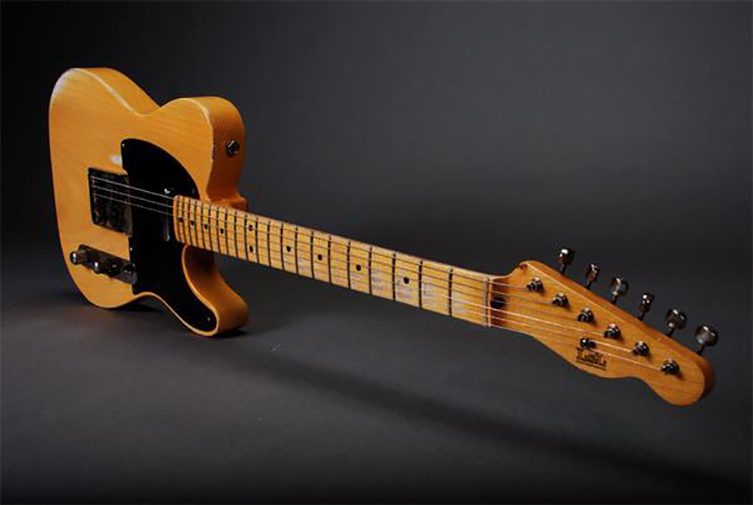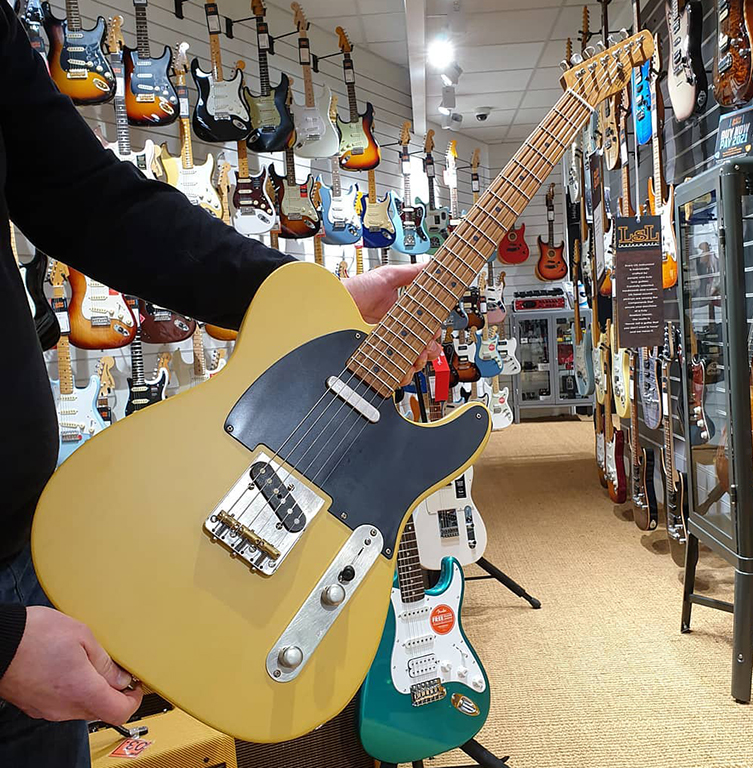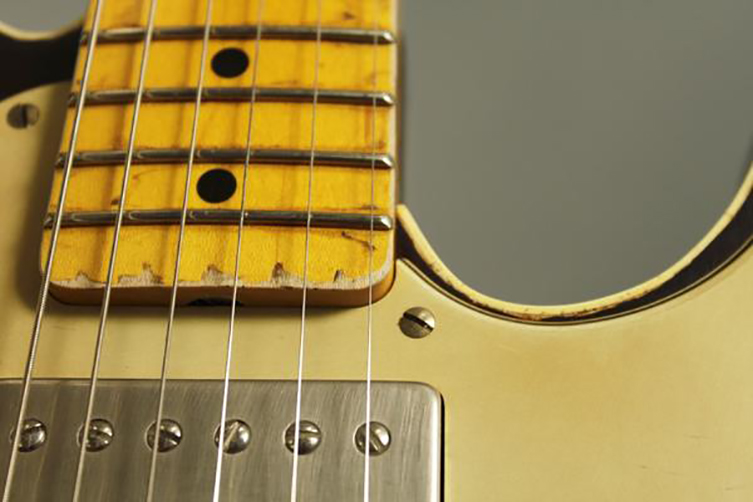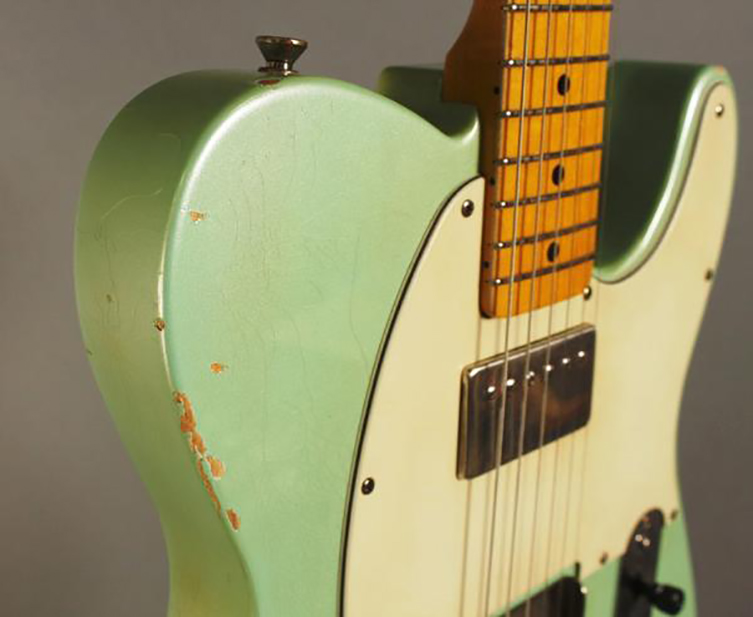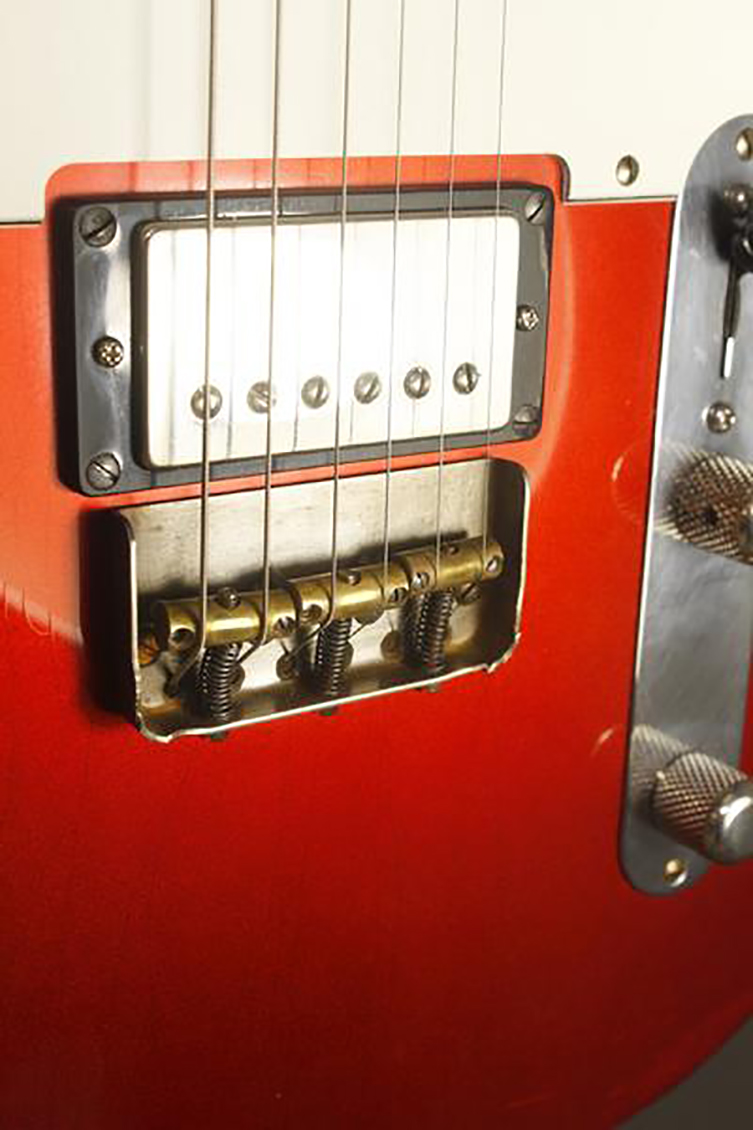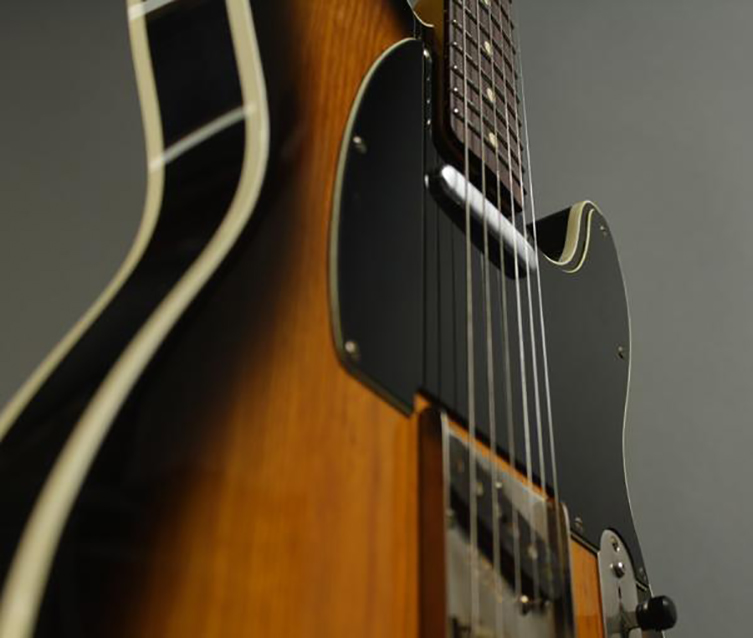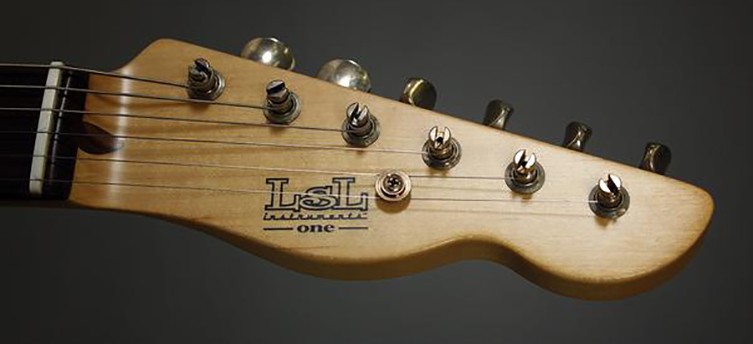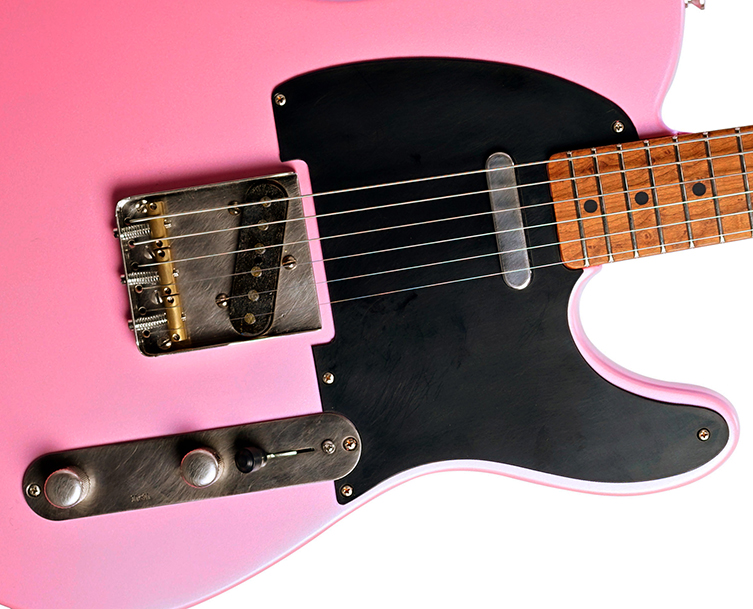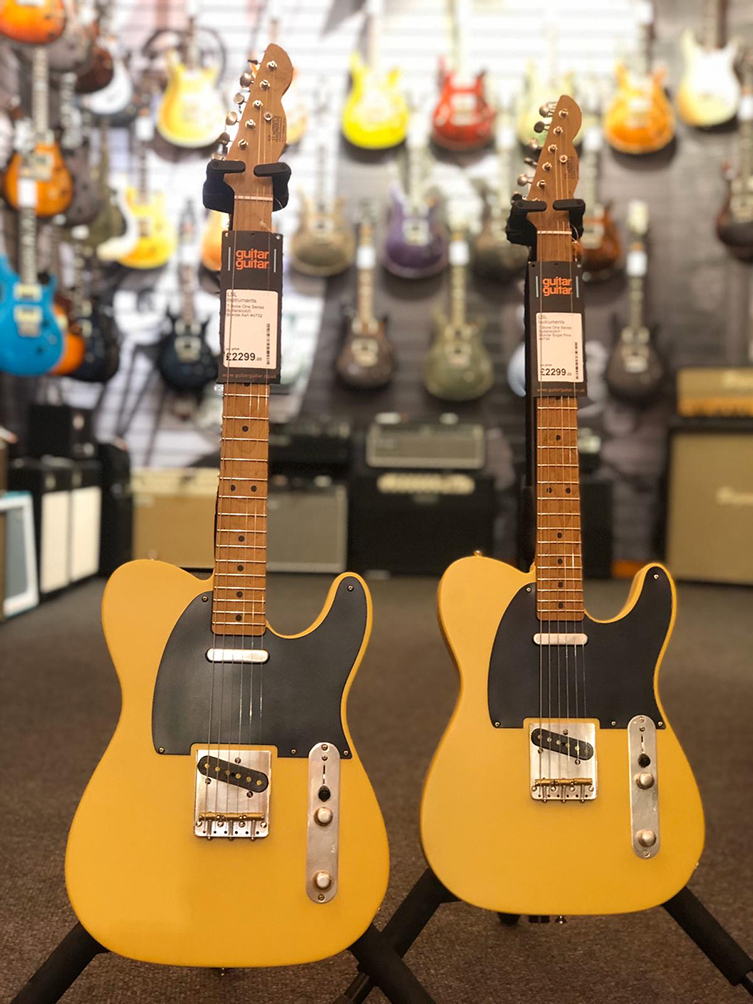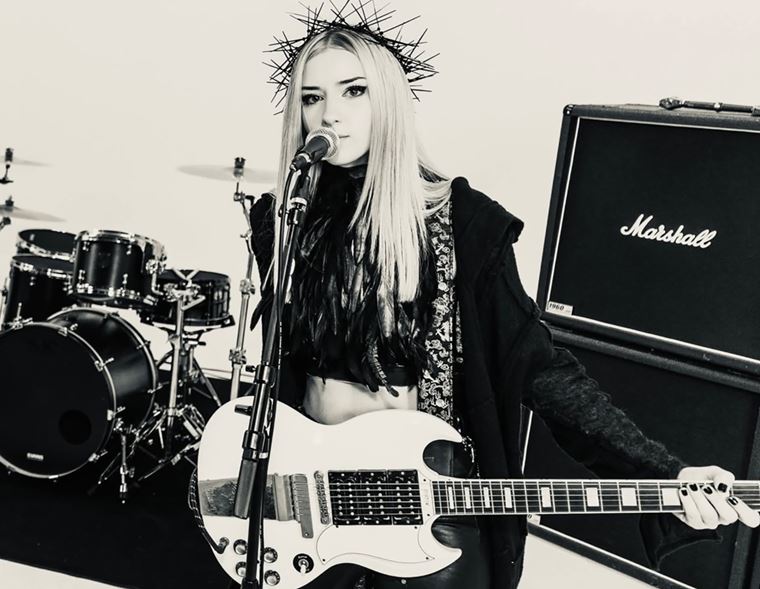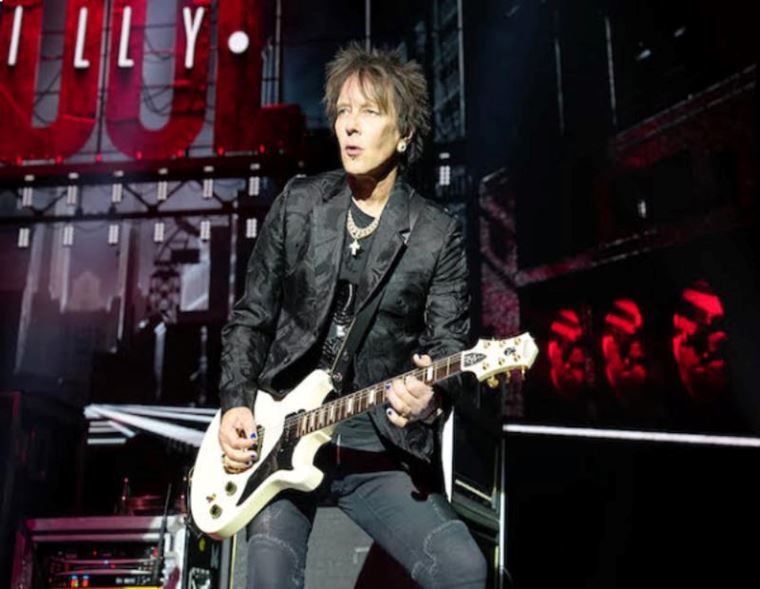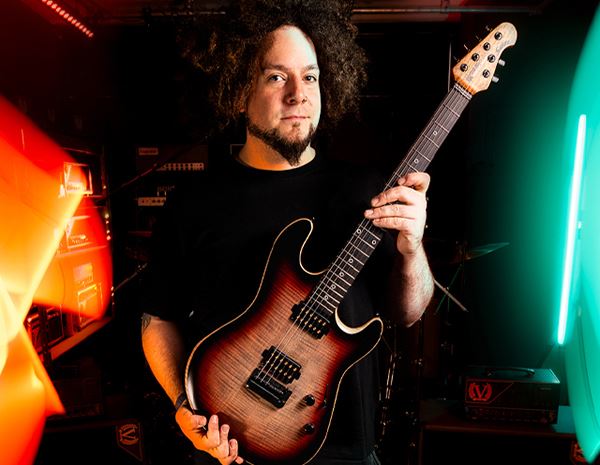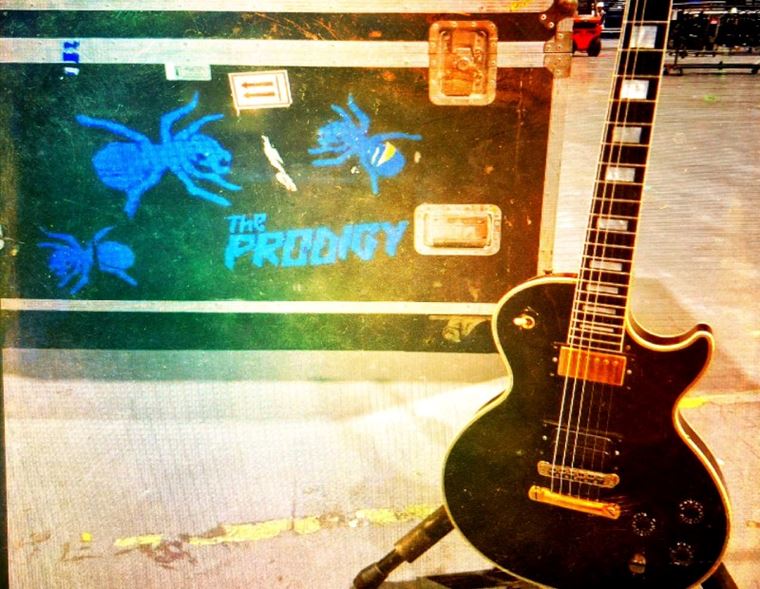Meet Your Maker: Lance Lerman of LsL Guitars
Published on 26 March 2020
LsL guitars have been impressing professional players for years.
Taking their cue from classic bolt-on designs from the 50s, Lance Lerman and his team in Santa Clarita, California take the notion of the boutique custom-made guitar to its zenith. For those who notice the smaller, finer details in tone, tone, sound and performance, LsL guitars deliver like hardly any other new guitars do. These genuinely feel and sound like the best vintage examples of Golden Age guitars. Indeed, many players who own such priceless heirlooms choose LsL as their gigging instruments, such is the similarity.
At guitarguitar, we have kept stock of LsL guitars frequently over the years. We have always been massively impressed by how we sound and play when we plug them in, and that is the real test! These guitars have a really addictive quality to them, and are extremely rewarding to play.
As a fresh order of LsL guitars enter their final phases of building and finishing, we decided to see if Lance was interested in talking with us about his history and process. We passed emails back and forth and Lance obliged us with some excellent stories about his background, his process and his overall attitude towards the making of guitars. He’s a super-interesting guy, with lots of great things to say. So without further ado, here is Lance!
Guitarguitar: So Lance, previous to LsL guitars, you’ve had a long history of repairing instruments and making things from wood, is that correct?
Lance Lerman: I have indeed been at it for quite a while. I got my start as a Banjo teacher at a store called The Fifth String in Berkeley, CA. Soon I became a guitar repairman learning from a great and experienced luthier, Max Ivey. That was somewhere around 1976. Then I was hired on with Saga Musical Instruments in San Francisco. I was their first and only employee. There, I did QC, setups, packing, shipping and whatever else needed doing.
Then a fellow repairman, Joe Deetz and I started our own guitar company, D&L Instruments. We rented a shop across the street from Fantasy Studios in Berkeley and started making our own line of guitars, basses and banjos. Being completely ignorant of how to run a business while being in Berkeley in the ’70’s we didn’t last too long. Joe moved back east and I kept it going until one morning I arrived at work to find that everything was gone. The place was broken into and that was that.
I picked up the family and moved to LA. There I started a one man woodworking shop with the few tools I had left after the burglary. I started out making wooden snack trays for vans and RV’s. I grew that business to a peak of 200 employees doing high-volume, and high tech woodworking. Our customers included many loudspeaker companies like, JBL, Infinity, Cerwin-Vega, AR, NHT, Sony, Mitsubishi, Jensen and many others. At one time we were making 1200 loudspeakers per day. Then one day I got taken out by one of my biggest customers who went bankrupt and took us down with them.
GG: You even spent 8 years out in China, didn’t you?
LL: Yes, after closing Sequoia Wood Products I guess I saw the writing on the wall and went to China to make an innovative line of kids computer furniture that my wife, Lisa, and I designed. After searching for a factory I settled on Pine Development in Dongguan. I soon found out that if I wasn’t there watching every move they made and every part they bought the product would not be acceptable. So I stayed and watched. After a while I convinced a friend that his factory would not survive in the US for very much longer and that he should consider China. I brought him to Shanghai and in a few days he agreed. So we found land and I stayed and built him a factory there in Shanghai.
By then I had a pretty solid grasp of Chinese and I was asked by Pine Development to become their General Manager. So I moved back to Dongguan and ran that place for several years. Pine was a very big woodworking factory with 500 employees. We made all kinds of products and it was a great experience.
GG: When you started LSL instruments, what sort of style were the first few guitars that you made?
LL: The first T-Bone I made was based on a ’52 Tele. I never intended to go into the guitar business and the guitar was only intended to be my personal instrument. I had been doing a lot of playing in bars and such in China with a guitar that I thought had no tone at all. I knew I could do better. Both my wife and I are woodworkers and we had a pretty decent little shop in our garage. Since I had a lot of free time I figured I’d make the guitar that I wanted, a 52 Tele. It took a while but when I finished it I was astounded. But then I thought “This can’t be true. Since I made it myself I thought that I must be wrong and just wishing it was great. So I took it to the most critical guy I knew, Tommy Kay. He worked at California Guitars and Amps in Sherman Oaks and I knew he wouldn’t pull any punches. He loved it and asked me if I could make another. I did and they sold it in two hours. It didn’t take long before I found myself in the guitar business. The guitars kept selling and we’ve kept making them.
GG: Lots of companies talk about their guitars being ‘handmade’, but LsL seems to take this to a whole new level! Do you guys make your own truss rods and pickguards too? What does that level of ‘inhouse’ building mean for the end customer?
LL: Here’s the deal….If you’re going to be in the guitar business, making the same shape and style, using the same materials as companies that make somewhere like 700 per day, you had damn well better be good. I don’t think there is a place for a “good” guitar company. Good won’t last a week in this business.Especially if you’re doing it in California. So I decided from day one that we would make as much of the guitar as we possibly could so that we could control it all. That includes, the body, neck, pickguards, pickups, many of our bridges, truss-rods, neck plates, Tele-saddles with our own custom-made springs and screws. We even cast our own fingerboard dots (you can get any color you want).
I wouldn’t say that we do the entire guitar by hand. We do accuracy features with machinery and feel features by hand. For instance; the front of our necks are CNC cut with all features at once. We do the outside, fingerboard radius, dots, fret slots, nut slot and headstock thicknessing all in one setup so everything is extremely accurate. Just what you want for the front of the neck. The back of the neck (the feel side), we do completely by hand. Same goes for the bodies, arm and hand contours are done by hand while the accuracy features are done by machine. This makes sense. Handmade is great when applied to features that need that human touch. On the other hand I want fret slots to be perfectly placed every single time.
GG: That hand-aged nitrocellulose finishes are superb: can you share any secrets about how you achieve these aged effects on the bodies and hardware?
LL: We use real lacquer and unlike some, our lacquer finishes are ALL lacquer. We don’t spray lacquer over catalyzed plastic finishes and then call it a lacquer finish. When we say lacquer it’s all lacquer. So that’s one thing. Secondly, we keep it thin – really thin. So thin that it's almost impossible to make it perfect. So, we age them. That allows us to put very thin finishes and therefore make better sounding guitars.
The hardware we etch with acid and hand age where appropriate depending on age levels.
Though we started with all nitro finished guitars these days we make modern guitars with perfect glass smooth polyester finishes and our economy One Series guitars have a single top coat of polyurethane. We moved to that because some of our dealers wanted defect free finishes and we couldn’t do that in all nitro. It can be done but it takes months of drying and re-coating to achieve, especially with the lacquers that are available these days.
Our standard series guitars remain all nitro.
Secrets to relicing and aging guitars: Every ding, scratch and wear-through has to have a story behind it. I think about this when I age a guitar. How did this happen? If you have a good answer to that then the relic job will work out fine. I’ve had quite a few nights where perhaps I hit the sauce a little too much and learned how guitars got reliced. Also, nitro never stops drying. It will keep on drying until it flakes off as dust. So it is important for reliced guitars to be nitro.
GG: LsL make guitar bodies out of a range of woods, including Swamp Ash, Sugar Pine and Korina. Which is your favourite to work with?
LL: I love Swamp Ash for T-Bones and Alder for our Saticoys. Since I had a big factory in LA a while back and was buying very large quantities of lumber, I have a lot of old friends in the lumber business here. That helps me get some of the best there is. That helps.
GG: Some LsL guitars are made with Reclaimed Pine. Is sustainability of timber a priority for LSL?
LL: Absolutely. We want a future. So we introduced the reclaimed lumber guitars. And to my great surprise they sound fantastic. I love them and I love making them. It is a real joy to put one into someone’s hands and watch the reaction. Fun stuff.
GG: You also hand-wind all of your own pickups. How much of the ‘LsL’ sound comes down to the materials and making of the pickups? Do you prefer lower-wound or higher-wound pickups?
LL: I prefer lower output pickups. I’m of the thought that there are a million ways with pedals and amps to increase the signal but not one way to lower it well. So I choose to make all the options possible. Give ‘em a low output pickup and give the player the option to have a sweet sound or do whatever they want with that gorgeous tone after it comes out of the guitar. High output pickups are one-trick ponies in my opinion. We make some higher output pickups but my choice is always toward the low side.
GG: Talking about preferences, what is your own favourite LsL guitar model and finish?
LL: My favorites are my two personal LsL’s. I have Sherry which is our first T-style guitar with two humbuckers (a Badbone II). The color was invented by our first painter, Robie Canlas, and it’s called RC Red. It’s red that leans towards orange slightly with a metallic powder in it.
My other one is one of our semi-hollow body T-shaped Soledad guitars. I did the finish on it myself with a hand stained quilted maple top. I did a sunburst with 4 colors of stain and rubbed it on by hand. It came out beautiful. It has my favorite pickup combination of a P-90 in the neck and humbucker in the bridge position.
GG: LsL guitars are based on the classics: what is it about these designs that resonates so much with all guitar players?
LL: I think they feel like home. At least that’s how I feel about T-style guitars. I can’t play a Strat to save my life. I flail around too much and I’ve had way too many embarrassing moments where I’ve hit the selector switch or the volume control accidently.
GG: LsL makes lots of necks with Roasted (or torrefied) Maple. To you, is this more for the feel, tone, look or a combination of all three?
LL: Roasted maple is a double edged sword. It seems to be more stable in different and changing climates, but it can be very brittle. It sounds great but at a price I think. The key seems to be the degree of roasting – too much and you get extremely fragile necks. When the roasting thing started the companies that were supplying it were not familiar with the needs of the guitar world. They were used to making products like greenhouse flooring and building products that did not require the hole drilling and slotting that guitar necks need. The learning process was expensive and heartbreaking. We cracked a lot of necks. Sometimes just the installation of a tuner mounting screw into a pre-drilled hole. We also have broken a neck by installing a fret. The neck broke completely in half.
The good news is that the companies that are doing the roasting have adjusted their temperatures and things have gotten a lot better. We have also adjusted by drilling slightly larger holes.
It has been a while since we’ve had a problem…knock on wood?
GG: Finally, who do you see as being the ideal LsL customer?
LL: The ideal customer for us is the player who can hear and feel the difference.
Since starting this endeavor, I’ve known that if we were to make guitars in this world there are only two avenues that might have a slim chance of surviving: cheap and great. There was no way we could survive for a week if we were to try and compete at the low-end (nor would I want to). So the reality of the situation is that if we were going to sell a product that is the same shape and used the same materials as the giant was making for the last 70 years then we had better be good – really good. So how is that done?
As I see it there is only one way. Do EVERYTHING better. The bottom line is that every single thing we do to a guitar must be better than the competition. We strive to stack up pennies and hopefully in the end the small differences stack up to a very big difference. Each and every LsL guitar MUST sell itself and in most cases the mission is to move every potential customer off of the guitar they walked into the store to get by being so much better that they will feel like an idiot if they don’t walk out with ours. This is the reality of our position in the world. We have one shot at every customer and we better get them then.
So, our ideal customer? It's simple….those who can tell the difference.
So there you have it. Sage words from the man himself. We’d like to thank Lance for talking the time out of his busy schedule to give us such great answers! Please click through to view our selection of LsL guitars on the site.
View Our LsL Guitars
Thanks for reading

